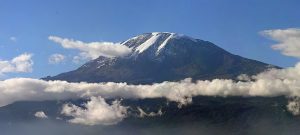Preserving Biodiversity: The Ngorongoro Conservation Area in Tanzania
Preserving Biodiversity: The Importance of Ngorongoro Conservation Area
Located in Tanzania, the Ngorongoro Conservation Area is a UNESCO World Heritage Site and a crucial area for preserving biodiversity. Spanning over 8,000 square kilometers, the Ngorongoro Conservation Area is home to a diverse range of flora and fauna, making it a vital ecosystem in East Africa.
The area’s unique landscape includes the Ngorongoro Crater, the world’s largest inactive, intact volcanic caldera. This natural wonder provides a habitat for a wide variety of wildlife, including the endangered black rhino, elephants, lions, and countless species of birds. The conservation area also supports the Maasai people, who have lived in harmony with the wildlife for centuries.
Preserving biodiversity in the Ngorongoro Conservation Area is essential for maintaining the delicate balance of the ecosystem. By protecting the area’s wildlife and habitats, we can ensure the continued existence of these species for future generations. The Ngorongoro Conservation Area serves as a prime example of successful conservation efforts in Africa.
Nurturing Wildlife: Conservation Efforts in Tanzania’s Ngorongoro Area
Conservation efforts in the Ngorongoro Conservation Area are led by the Tanzania National Parks Authority, in collaboration with various conservation organizations and local communities. These efforts focus on protecting the area’s wildlife, preventing poaching, and promoting sustainable tourism practices.
One of the key initiatives in the Ngorongoro Conservation Area is wildlife monitoring and research. By studying the behavior and population dynamics of different species, conservationists can better understand the challenges facing the area’s biodiversity and implement targeted conservation strategies. This research also helps to raise awareness about the importance of preserving biodiversity in the Ngorongoro Conservation Area.
Another crucial aspect of conservation in the Ngorongoro Conservation Area is community involvement. The Maasai people, who have lived in the area for generations, play a vital role in preserving the wildlife and habitats. Through sustainable grazing practices and eco-friendly tourism initiatives, the Maasai are able to coexist with the wildlife while protecting their traditional way of life.
Visitors to the Ngorongoro Conservation Area can experience the beauty of this unique ecosystem through guided tours organized by Sunset Africa Safari. These tours offer a once-in-a-lifetime opportunity to see the diverse wildlife and stunning landscapes of the conservation area while learning about the importance of preserving biodiversity.
In conclusion, the Ngorongoro Conservation Area in Tanzania is a shining example of successful conservation efforts in Africa. By working together to protect the area’s wildlife and habitats, we can ensure the continued existence of these species for generations to come. For booking requests for a tour of the Ngorongoro Conservation Area, clients can contact Sunset Africa Safari at info@sunsetafricasafari.com. Let us all do our part to preserve biodiversity and protect our planet’s natural heritage.


